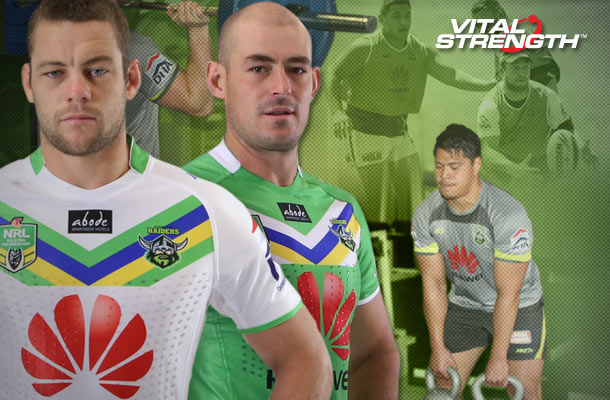
Get big for football and build strong muscle mass this rugby season with these expert tips for packing on size.
High impact, rapid paced games like Rugby League and Rugby Union require players to get big and build strong muscle mass so that they can withstand continuous on-field collisions week after week.
We asked Canberra Raiders Strength and Conditioning Coach, Leigh Woodbridge for his pre-season training tips on how to put on size and get big for football.
Pre-season get big for football Tip #1
Body Composition – To get big for football it is all about balancing body composition. Rugby league players need to have a high level of muscle mass and a relatively low level of body fat percentage. Ideally a rugby player’s body fat percentage needs to be around the 12% mark, this can be scaled depending on the player’s position and age. To obtain these levels a rugby player’s diet needs to be strict and combine lean protein, dairy sources, carbohydrates, and a large amount of fruit and vegetables. It is vital that players minimise unnecessary sugar, fat and alcohol intake.
Pre-season get big for football Tip #2
Total Energy Intake –To get big for rugby and to meet required energy expenditures players need to consume upwards of 6 meals a day. To get bigger and to increase muscle mass and size Canberra Raiders players aim to be in a positive energy balance and consume upwards of 17000kj per day. In order to do this they need to have 3 solid main meals along with 3-4 macronutrient rich snack meals.
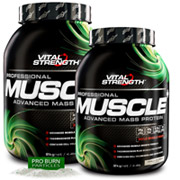 To get big muscle results for football food should be eaten every 2-3 hrs. To put on size, Canberra Raiders players use Vitalstrength Pro-Muscle Protein to help increase total daily energy intake– either mixed with water or low fat milk along with other fruits or on top of desserts or cereals this can provide rugby players with another 1500kj per day without leaving them feeling over full. It is vital that rugby players consume protein at every meal in order to maximise tissue growth and build big, strong muscle.
To get big muscle results for football food should be eaten every 2-3 hrs. To put on size, Canberra Raiders players use Vitalstrength Pro-Muscle Protein to help increase total daily energy intake– either mixed with water or low fat milk along with other fruits or on top of desserts or cereals this can provide rugby players with another 1500kj per day without leaving them feeling over full. It is vital that rugby players consume protein at every meal in order to maximise tissue growth and build big, strong muscle.
Pre-season get big for football Tip #3
Weight training – Once Canberra Raiders players have their diets sorted the next phase of getting big for football is to undertake the correct type of resistance training. There are a number of ways that weights programs can be performed for rugby players, from upper and lower body splits, to push – pull splits, a 2 x 3 day split comprising chest and triceps, back and biceps, legs and shoulders. Rugby pre-season when programs are designed to help players get big and increase muscle bulk, players usually perform 4-5 weights sessions a week.
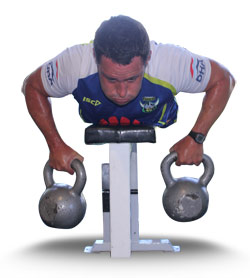 Get big programs traditionally consist of Olympic or primary lifts where the sets and reps would be around 4-7 x 2-6, this will be followed by secondary lifts with sets and reps in the order of 3-5 x 5-10, finally accessory lifts will be completed with sets and reps of 2-4 x 8-15. Every rugby training session will have core lifts either within the session or at the end, core work will vary between dynamic heavy lifts to static stabilisation lifts. Canberra Raiders players look to consume both Vitalstrength L-Glutamine and BCAAs along with Vitalstrength Whey Low Carb or Pro-Muscle Advanced protein post weights sessions depending on initial body composition.
Get big programs traditionally consist of Olympic or primary lifts where the sets and reps would be around 4-7 x 2-6, this will be followed by secondary lifts with sets and reps in the order of 3-5 x 5-10, finally accessory lifts will be completed with sets and reps of 2-4 x 8-15. Every rugby training session will have core lifts either within the session or at the end, core work will vary between dynamic heavy lifts to static stabilisation lifts. Canberra Raiders players look to consume both Vitalstrength L-Glutamine and BCAAs along with Vitalstrength Whey Low Carb or Pro-Muscle Advanced protein post weights sessions depending on initial body composition.
 Pre-season get big for football Tip #4
Pre-season get big for football Tip #4
Meal Timing – In order to maximise gains from lifting weights and to get big for the rugby season players need to consume the correct amount and type of food pre and post weight training. Pro Rugby League Coach Leigh Woodbridge finds that one of the easiest ways to get big for football players is to increase muscle bulk and get bigger is by using Vitalstrength Creatine. Canberra Raider’s players undergo a 7 day loading phase of 20-25grams per day followed by a maintenance phase of 5 grams a day. The Creatine allows Raiders players to perform a greater volume of lifting each training session due to faster recovery provided by the Creatine saturation with in the body. Along with Creatine, Leigh finds Vitalstrength Beta Alanine to be another great supplement which allows rugby players to perform high intensity work with less fatigue again allowing more work to be completed and therefore increasing overall work output.
 In order to get big and increase muscle bulk rugby players should consume a meal within 30minutes of training consisting of carbohydrates and protein (Canberra Raiders use Vitalstrength Whey or Vitalstrength Pro-Muscle with low fat milk to maximise energy intake. )
In order to get big and increase muscle bulk rugby players should consume a meal within 30minutes of training consisting of carbohydrates and protein (Canberra Raiders use Vitalstrength Whey or Vitalstrength Pro-Muscle with low fat milk to maximise energy intake. )
Pre-season get big for football Tip #5
Conditioning Sessions – To get big for the season ahead rugby conditioning sessions need to comprise of a mixture of aerobic running and cardio sessions of greater than 10 minutes and up to 60mins at a predetermined level of Max Aerobic Speed as determined through testing.
Along with the aerobic session rugby league conditioning needs to be game specific and work intervals should be anywhere from 10sec to 4 minutes at a higher intensity again which is based on MAS testing levels. This type of conditioning helps to improve Canberra Raiders player’s body composition to lower fat levels.
Pre-season get big for football Tip #6
Rest and Recovery – Rugby players need to understand that when they are training to get big they are placing the body under a high amount of stress which increases cortisol levels and can lead to muscle tissue breakdown. In order to combat this, football players need to make sure they are getting adequate sleep, minimum of 8 hours each night along with ample rest time which allows them to destress from the rigours of rugby training. Napping during the day between sessions is a great way to allow the body to rest and rejuvenate muscle tissue which will help with muscle growth to gain size and get big for football.
Finally, Rugby League Strength & Conditioning Coach Leigh Woodbridge says patience is the key to getting big for football and gaining muscle bulk. It takes time and hard work to build the athletic body that is required to compete successfully in rugby league, rugby union and other football codes.



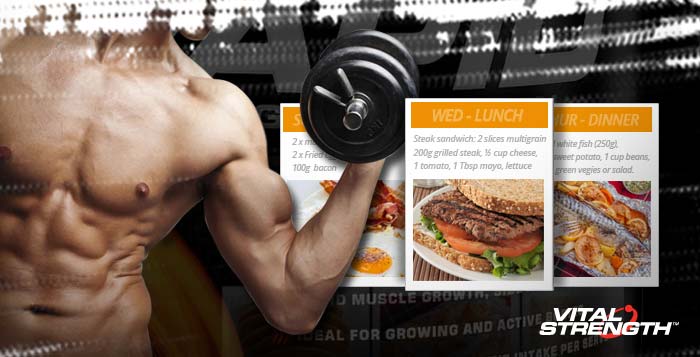
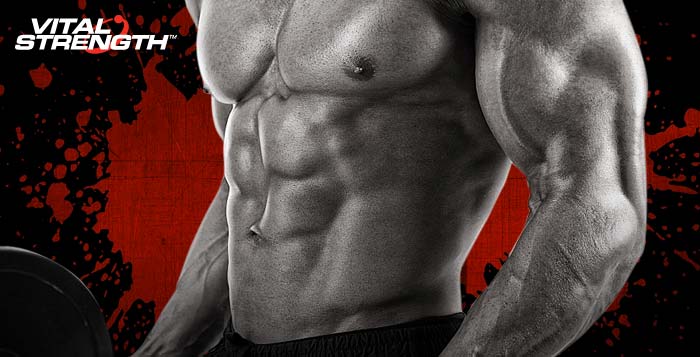
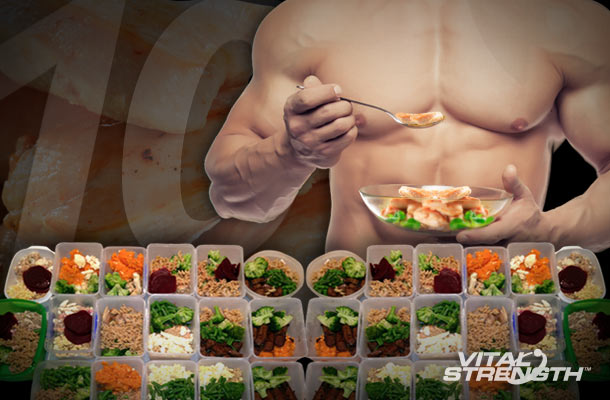



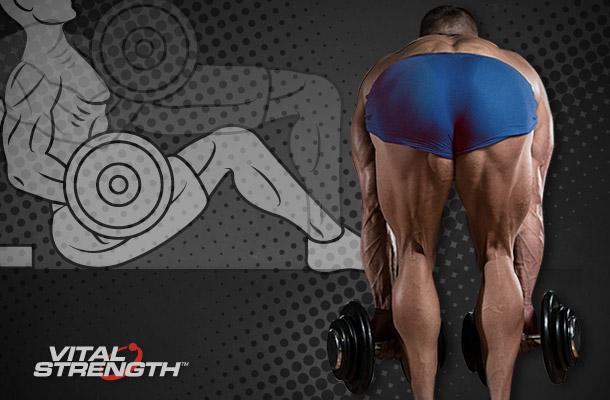

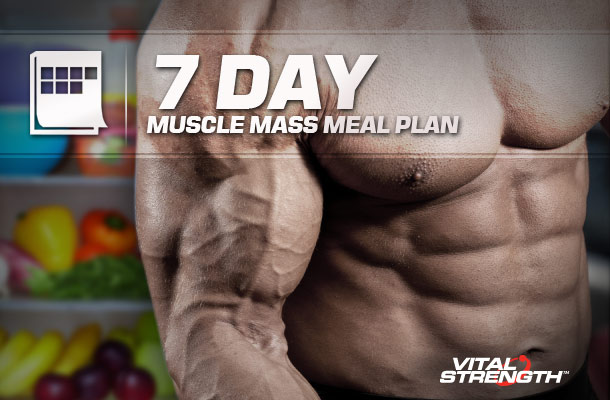






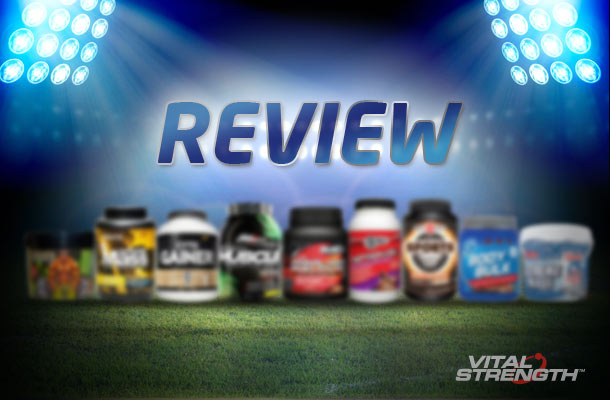

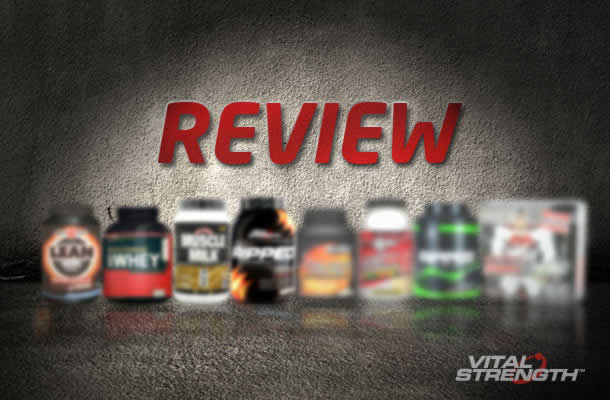



 Information will not be shared with third-parties
Information will not be shared with third-parties